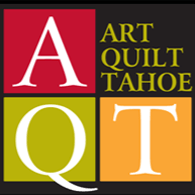Instructor: Sandra Mollon
The supply list has been provided by the instructor. If you have any questions, please contact the instructor at sandra@sandramollonquilts.com.
Getting Started
If you are working from your own photograph, be sure you have selected one to use that you would enjoy making, with clear details (good resolution), and a subject that would be interesting. If you are a beginner, I recommend a simple subject. If you are unsure about your image and want advice please email the photo (at least 3 weeks in advance if possible) to me. Please limit the number of images you send to your 2 favorites.
If you are using someone else’s photo, you should get permission from them before you start. I often will get that in writing before I begin, as I usually enter my quilts in large shows, which may require a written permission.
Once you have selected your photo, you will need to print out the photo in color in whatever size you want the finished quilt to be. For this workshop I recommend that it be no larger than 36” on a side. I am doing most of my large printing at
VistaPrint.com. Find the tab for posters, select your size and orientation, and upload your image. I try to buy the cheapest type available in full color. If the resolution is good, they will say so. Additionally I have used blockposters.com—the website has step by step instructions to enlarging your picture and printing it out on copy paper in blocks. When printed you can trim and tape the individual sheets together in the finished size you selected.
You should also print a good copy of the photography on photo paper (about 8 x 10” is fine), as a reference photo to have nearby. Sometimes when I am working on the enlargement, I need to refer back to the original to verify the details.
To use your time wisely in class, I recommend doing the tracings in advance of the event. I may send out a Zoom invite in the month prior, to talk people through this step. If you cannot attend that Zoom meeting, no worries. What you should do is to trace what lines and shapes of the image that you can see that are important to the design, and that outline value and color changes. Be sure the tracing is done on the paper side of the freezer paper—the shiny side is plastic coated. I recommend using a pencil. If your image is wider than 18” in any direction, you may need to use masking tape to tape a second sheet butted up next to the first. Place your photo on a light box or taped to the window. Bring the enlargement to the workshop along with the traced drawing on freezer paper. If you do not get your tracing completed in advance you may want to bring a light box to use at the workshop.
Supplies Needed
Misty Fuse fusible web. I prefer this type because it doesn’t seem to build up in your machine, or make your needle gummy, or make the finished quilt rock hard like a piece of cardboard. You will want at least 4-5 yards.
Freezer Paper: You will need enough freezer paper to trace your entire image on. If your enlargement is bigger than the 18” wide freezer paper, you will need to tape pieces together—butt up—don’t overlap (use beige masking tape) to make a big enough piece.
A travel size iron and ironing mat
Light box (Unless you complete the tracing in advance)
Pencil with an eraser
Scissors for cutting paper and fabric
A Slice ceramic craft knife (highly recommended). Do not use an Exacto knife with a metal blade—it can cut your fabric. I usually have some with me to sell, contact me to hold one for you.
Silicon Goddess Sheets or 1 yard Parchment paper (Reynolds brand or Costco brand parchment paper work well). If you can bring a portable light, do so.
SEWING MACHINES WILL NOT BE REQUIRED at this event. Unless your project is small you will not get to the quilting step. I will go over the quilting step in class.
Fabric:
You will need a piece of background fabric or a cotton solid or batik (choose a color for this that is often seen in the photo) the size of your enlargement (or pattern) with a bit left around the work to be trimmed off later.
Other fabrics: Be sure to really look at your image, and spend some time finding fabrics which are close in both the color and values you see—batik fabrics are preferred for this process. Avoid solids, prints of all types, and fabrics that fray easily. Good quality hand dyed cottons are great. This requires you to look at your image very carefully. The amounts of each have more to do with your picture, so I cannot give you an exact amount. The advice I can give you have a large variety (something like 30-40 different fabrics, in 1/8 yard to 1/4 yard amounts, which is most likely enough.
To Finish your quilt: A backing fabric cut 4” larger in both width and length than your enlargement, and a piece of batting of the same size as the backing, as well as thread to machine quilt. This step is usually not done in class due to time restrictions.
I will bring the following media to the workshop for classroom use, but if you want your own set read this information below:
Color Pencils, Ink, Fabrico Markers, and Oil Pastels are all media I regularly use, and recommend good quality color pencils like Prismacolor. I also used Cray Pas oil pastels. Colors in the Fabrico markers will vary according to the image. Colors I use most often are: #152 Sand, #181 Cool Grey, #155 Truffle Brown, and #182 Real Black.
